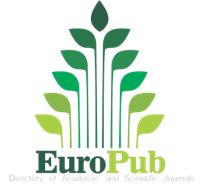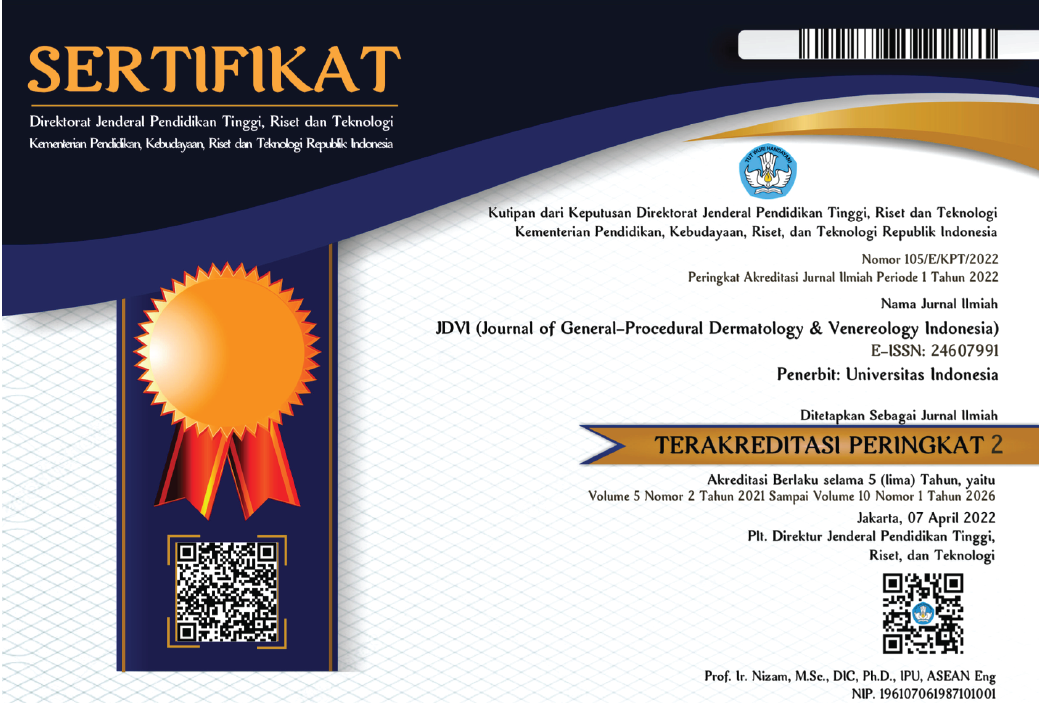Abstract
Background: Non-pustular annular psoriasis is a rare condition in which a type of plaque psoriasis appears with ring-like lesions and a clearer central appearance. The disease activities in psoriasis may be evaluated clinically. It is essential to provide a more meaningful approach to treatment management.
Case illustration: A 33-year-old woman complained of a one-year history of multiple erythematous, scaly, and annular plaques with central clearing. Some lesions were surrounded by discrete pinpoint papules on several parts of her body. The lesions worsened during seven weeks of topical and systemic therapy.
Discussion: Psoriasis is a chronic, multisystem inflammatory disease with predominantly skin and joint involvement. High disease activity or unstable psoriasis was defined as recent exacerbations showing pinpoint papules developing around established and erythematous borders of the lesions. The active severe disease may present with systemic involvement due to the production of pro-inflammatory chemokines and cytokines in the skin lesions and circulation.
Conclusion: A complete clinical history and physical examination can help the clinician diagnose non- pustular annular psoriasis. Several factors may cause worsening disease activity in a patient with psoriasis. Distinguishing between stable and unstable plaque psoriasis is essential to obtain information on psoriasis pathomechanism related to systemic involvement and managing therapeutic strategies. A multidisciplinary approach must be conducted in the management of a patient with high disease activity.
References
- Kim WB, Jerome D, Yeung J. Diagnosis and management of psoriasis. Can Fam Physician. 2017;63(4):278-85.
- Chen T, Ma D. Annular erythematous plaques with scale. BMJ. 2020;371:m3974
- Guill CL, Hoang MP, Carder KR. Primary annular plaque-type psoriasis. Pediatr Dermatol. 2005 Jan-Feb;22(1):15-8.
- Christophers E, Kerkhof PCM. Severity, heterogeneity, and systemic inflammation in psoriasis. J Eur Acad Dermatol Venereol. 2019 Apr;33(4):643-47.
- Kamiya K, Kishimoto M, Sugai J, et al. Risk factors for the development of psoriasis. Int J Mol Sci. 2019;20(18):4347.
- Micali G, et al. Auspitz sign: A view from the top. J Am Acad Dermatol.2019;81(4), AB24.
- Sanchez DP , Sonthalia S. Koebner Phenomenon. StatPearls [Internet]. 2022 [cited 2022 Okt 22]. Available from: https://www.ncbi.nlm.nih.gov/books/NBK5 53108/
- Gudjonsson JE, Elder JT. Psoriasis. In: Kang S, Amagai M, Bruckner AL, et al., editor. Fitzpatrick’s Dermatology. 9th ed. New York: McGraw-Hill; 2019. p. 457–97.
- Boehncke W-H, Schön MP . Psoriasis. Lancet. 2015 Sep;386(9997):983–94.
- Boechat JL. Psoriatic march, skin inflammation, and cardiovascular events – two plaques for one syndrome. Int J Cardiovasc Sci. 2020;33(2):109-11.
- Raj R, Saraswat A, Thomas KN, Gupta L. Unstable psoriasis in the setting of psoriatic arthritis: A rare presentation. Indian J Rheumatol 2022;17:84-5.
- Pietrzak A, Grywalska E, Socha M, et al. Prevalence and possible role of Candida species in patients with psoriasis: A systematic review and meta-analysis. Mediators Inflamm. 2018;2018:9602362.
Recommended Citation
Yasnova, Nevi; Budianti, Windy Keumala; and Andardewi, Melody Febriana
(2022)
"Non-pustular annular psoriasis with signs of high disease activity,"
Journal of General - Procedural Dermatology and Venereology Indonesia: Vol. 6:
Iss.
2, Article 10.
DOI: 10.7454/jdvi.v6i2.1118
Available at:
https://scholarhub.ui.ac.id/jdvi/vol6/iss2/10
Included in
Dermatology Commons, Integumentary System Commons, Skin and Connective Tissue Diseases Commons






























